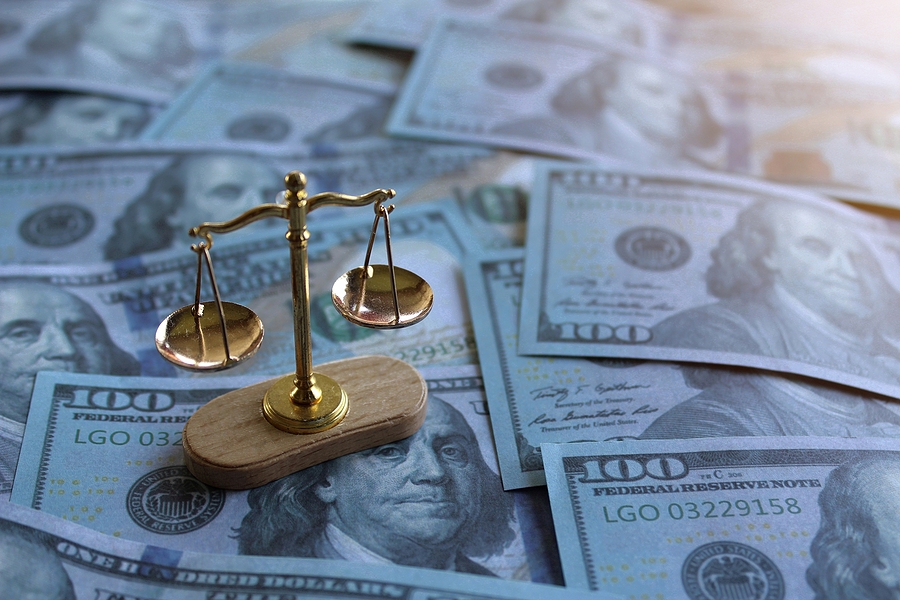If someone suffers an injury due to someone else’s negligence, they’ll naturally want to know how much money they can expect to receive. It really doesn’t matter whether they were in a bicycle accident, car wreck, motorcycle accident, or anything else. It would be nice to know immediately. However, there are a lot of factors that will determine how much your bicycle accident settlement is.
The bicycle accident attorneys with Sand Law have some information on those factors. We’re experts in personal injury accident law and have a long track record of helping our clients obtain maximum compensation. Find out what we can do for you by calling 651-291-7263 or contacting us online for a free consultation.

Minnesota Bicycle Accident Statistics
According to the Minnesota Department of Public Safety, there were a total of 511 bicycle accidents reported in Minnesota in 2021. Those accidents resulted in 458 severe injuries and 8 fatalities. These statistics illustrate the significance of bicycle accidents and the potential for severe injuries or even loss of life.
Average Bicycle Accident Settlement Amounts
There’s no fixed average settlement amount for bicycle accident claims, as each case is unique. The settlement amount can vary widely based on the specifics of the accident and the resulting damages. Liability, the extent of injuries, medical expenses, lost wages, and pain and suffering all play a role in determining the settlement value.
Factors that Determine Your Claim’s Value
Several key factors influence the value of your bicycle accident claim. These include the following:
The Severity of Your Injuries
The worse you’re hurt, the more money you can expect to receive. Examples of severe injuries include spinal cord or brain damage, internal organ damage, and others. The value of your claim will largely depend on the impact of these injuries on your daily life, ability to work, and overall quality of life.
Your Total Damages
Your total damages refer to the economic and non-economic losses you have suffered due to the bicycle accident. The following are some common examples of damages in a personal injury case.
- Medical expenses: This includes all past and future medical costs related to treating your injuries, such as hospital bills, doctor’s visits, surgeries, medications, rehabilitation, therapy, assistive devices, and any necessary modifications to your living environment.
- Lost wages and loss of earning capacity: If your injuries have caused you to miss work, you may be entitled to compensation for lost wages. Additionally, if your injuries caused a diminished earning capacity, you can seek compensation for lost earnings.
- Pain and suffering: Pain and suffering refer to the physical and emotional distress caused by your injuries and their impact on your quality of life. This includes physical pain, mental anguish, loss of enjoyment of life, and more.
Available Insurance Coverage
The available insurance coverage plays a significant role in determining the potential value of your claim. This coverage includes liability insurance held by the at-fault party and any applicable coverage you have under your insurance policies. For example, you may carry uninsured/underinsured motorist coverage or personal injury protection (PIP). The policy limits of these coverages will determine the maximum compensation available to cover your damages.
An experienced personal injury attorney can thoroughly evaluate your case, assess the severity of your injuries, calculate your total damages, and review the available insurance coverage. They can then negotiate with the insurance company to seek the highest compensation. Your attorney can also explore other legal avenues to ensure you receive fair and just compensation for your injuries and losses.
Bicycle Accident Settlement Value vs. Trial Value
The settlement value of a personal injury claim refers to the amount of compensation that can be negotiated and agreed upon between the parties involved, typically through negotiations or mediation, without going to trial. Settlement negotiations aim to reach a resolution that is acceptable to both parties. A settlement can help all parties avoid the need for a lengthy and potentially unpredictable trial process.
Settlement Value
The settlement value will often depend on the following:
- The strength of the case: The evidence, witness testimony, expert opinions, and legal arguments play a significant role in determining the settlement. A strong case with compelling evidence may increase the likelihood of obtaining a higher settlement amount.
- Risk assessment: Both parties assess the risks and potential outcomes of going to trial. They consider factors such as the strength of the evidence, the credibility of witnesses, and potential legal arguments. If there’s a higher risk of losing or incurring significant costs during the trial, it may incentivize both parties to settle.
- Cost and time considerations: Settling a case can save both parties time and money. Trials can be lengthy and expensive, involving court fees, expert witness fees, attorney fees, and other related expenses. Settlement negotiations provide an opportunity to resolve the case efficiently. They also avoid the time and costs of trial preparation and proceedings.
Trial Value
Trial value refers to the potential compensation a jury could award if the case goes to trial. Several factors determine trial value, such as:
- Evaluation by the court: During a trial, the judge or jury evaluates the evidence, listens to witness testimony, and weighs the legal arguments presented by both sides. The decision-makers assess the liability of the parties involved, the extent of the injuries, the impact on the plaintiff’s life, and other relevant factors in determining whether or not to award compensation.
- Potential for punitive damages: In some cases, if the court finds the defendant’s conduct was particularly reckless, intentional, or egregious, the court may award punitive damages. The plaintiff will receive punitive damages in addition to compensatory damages. Judges and juries award punitive damages to punish the defendant and deter similar behavior in the future. They can significantly increase the trial value of a case.
- Jurisdiction and legal precedents: The jurisdiction where the trial takes place and the legal precedents established in similar cases can also influence the trial value. Each jurisdiction may have its guidelines or trends regarding compensation for specific injuries. These trends can impact the potential trial value of a case.
Bicycle accident settlement negotiations often involve compromises and considerations that may result in a lower settlement amount than what could be awarded at trial. However, settling a case allows for more control over the outcome. It also eliminates the uncertainty associated with a trial.
Work with Sand Law to Receive Full Compensation for Your Damages After a Bicycle Accident
By working with a knowledgeable attorney at Sand Law, you can have peace of mind knowing that your case is in capable hands. We’ll use our extensive knowledge and experience to determine why the bicycle accident happened and who’s to blame. We’ll then work to help you get every dollar you deserve. Call 651-291-7263 or use our online contact form to schedule a free review of your case.

